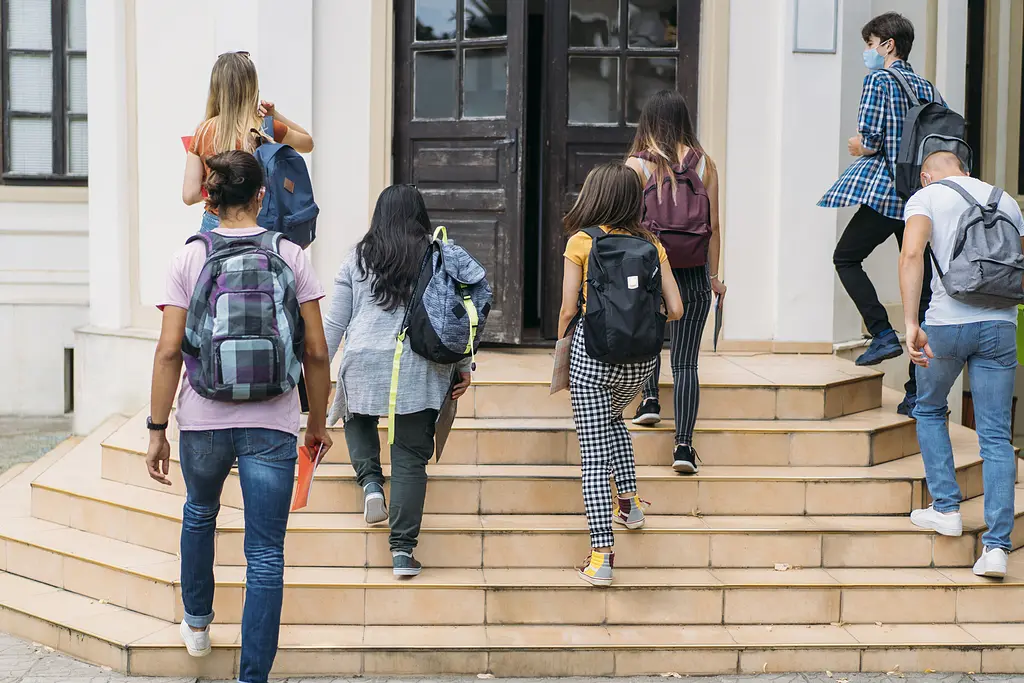
Supporting Student and Staff Well-Being
In the Kijita (Wajita) language, the saying, “Omwana ni wa bhone,” means that no matter a child’s biological parents, the upbringing belongs to the community. The U.S. education system views schools as belonging to a larger ecosystem that includes families, communities, health care, justice, technology, and more. This reality is more evident because of the COVID-19 pandemic. Educators across the nation are leaning on the community to support student and staff well-being and keep schools safe.
In 2023, the United States had the highest number of school violence incidents in a 6-month period ever reported. Educators and school safety experts across the nation are seeking ways to prevent school violence while promoting resilience as a preventive strategy to counterbalance risk factors, such as trauma and adverse childhood experiences, but students and caregivers still worry about schools’ preparedness. In a 2023 report by 21K School, data showed that only 16% of students are confident that their schools can support their mental health and emotional needs. In a 2022 survey conducted by Hanover Research on school safety perceptions, 44% of parents of K–12 students reported fearing for their child’s safety at school.
RTI’s Resilient Learning Communities Framework
At RTI International, we often hear about school safety and mental well-being concerns from teachers and school leaders. In a recent interview about the need for social and emotional support, a teacher with the Gates County school district shared that schools “need to include families and the community at the forefront.” Many schools have taken a twofold approach to supporting students, staff, and families: (1) developing collaborative school safety plans and procedures; and (2) supporting the social and emotional well-being of students, staff, and families. This approach calls for a village of invested partners equipped with the beliefs, knowledge, and skills to support each other for the well-being of all.
RTI’s Resilient Learning Communities (RLC) Framework provides guidance and strategies to implement a community-based approach to creating safe and resilient schools. It provides an integrated set of strategies to build a strong learning community where students, staff, families, and communities can work together and thrive. To discover specific resources and strategies to support your schools in cultivating resilience, download the Cultivating Resilience in Schools toolkit.
Informed by research and practice on school safety and community resilience, the RLC Framework emphasizes six domains that prioritize a community-based approach to safety and resilience in schools (Figure 1): (1) establish shared commitment and understanding to promote ongoing collaboration toward a common purpose; (2) encourage adult well-being; (3) promote a classroom culture of safety and wellness that supports student engagement; (4) integrate resilience-building strategies into instruction; (5) implement structures to ensure family and community engagement; and (6) engage in data collection and analysis. Key tenets of implementing the RLC Framework in school and community settings include starting with a diverse team, prioritizing relationships and trust, focusing on assets, promoting collective social and emotional efficacy, providing a continuum of support and resources, and evaluating and monitoring efforts.
Figure 1. Components of the Resilient Learning Communities Framework

Start with a Diverse Team
Transformation in the educational system requires organization. One way that schools coordinate efforts and build shared leadership is by developing cross-disciplinary teams that represent various groups in the school community, including community representatives, families/caregivers, teachers, school leaders, school support staff, and students. Shared leadership builds trust and cohesion, leading to improved efficiency and effectiveness.
Prioritize Relationships and Trust
Social support, or access to meaningful social ties to other individuals or the community, is considered a buffer for mental well-being when there is a low level of resilience. Educators can promote strong social ties with students and their families by modeling empathy first. With strategies like empathy interviewing, empathy mapping, and empathetic listening, educators can learn about others’ perspectives and make better decisions. Trust is cultivated when partners see that their perspectives are considered in decision-making.
Leverage Community Assets for Inclusive Education
The science of resilience teaches us that the best way to promote resilience may be to focus on the systems that surround schools and students. An asset-based approach focuses on the strengths of diverse individuals and the community. Assets in the learning community extend well beyond the walls of the school building. Each community, both inside and outside of school, possesses unique characteristics that can support a positive and inclusive environment. Drawing on the strengths and assets of individuals and groups can ensure inclusivity through strategies like community-wide and school-wide asset mapping to bring to light the strengths, resources, and contextual and social factors that are unique to the community.
Promote Collective Social and Emotional Efficacy
Students spend about 1,000 waking hours—or 6 hours per day—in schools each year. During this time, adults play an integral role in supporting students’ mental health. It is crucial that schools provide opportunities for adults in the community to learn about mental health and social emotional learning (SEL). A school’s SEL implementation team might coordinate workshops or professional development opportunities for educators and community members to build resilience and increase their own social and emotional competencies.
Provide a Continuum of Support Using RTI’s Four-Level Approach for Diverse Student Needs
Each student within the learning community has unique capabilities and needs. RTI offers a systemic approach that includes four levels: network level, local education agency (LEA) level, school level, and individual level. Network-level activities promote collaboration and engagement across LEAs and build sustainability. LEA-level activities focus on district-specific planning and training activities related to school safety. School- and classroom-level activities focus on programming, on-site training, and building of professional learning communities. Individual-level activities focus on capacity building and professional development. This tiered approach ensures that the continuum of mental health supports exist within and across the learning community.
Evaluate and Monitor Efforts
The role of data in continuous improvement is to serve both as a starting point for planning and as a place to return to assess the system, with the intent of gathering information about the learning environment. Strategies for evaluating and monitoring efforts include selecting the appropriate data collection technique and using data-based problem-solving steps. As the saying goes, "what gets measured gets done, what gets measured and fed back gets done well, what gets rewarded gets repeated."
Strategies to Build Supportive School Communities with RTI’s RLC Framework
According to a recent Centers for Disease Control and Prevention (2023) report, the number of adolescents reporting poor mental health is increasing, and schools and parents can create protective relationships with, and ecosystems around, students to help them grow into healthy adulthood. RTI’s RLC Framework presents an integrated set of strategies to build supportive school communities and nurture safety for our young populations so they can have adults around them who can model social and emotional efficacy and extend support that is research and practice informed.
RTI offers a contextualized, research-based continuum of services and resources grounded in the RLC Framework—including capacity-building workshops, professional learning communities, and one-on-one support—to develop a daily practice of social and emotional resilience for all members of a learning community.
Learn more about RTI’s work in school safety and school violence prevention.

